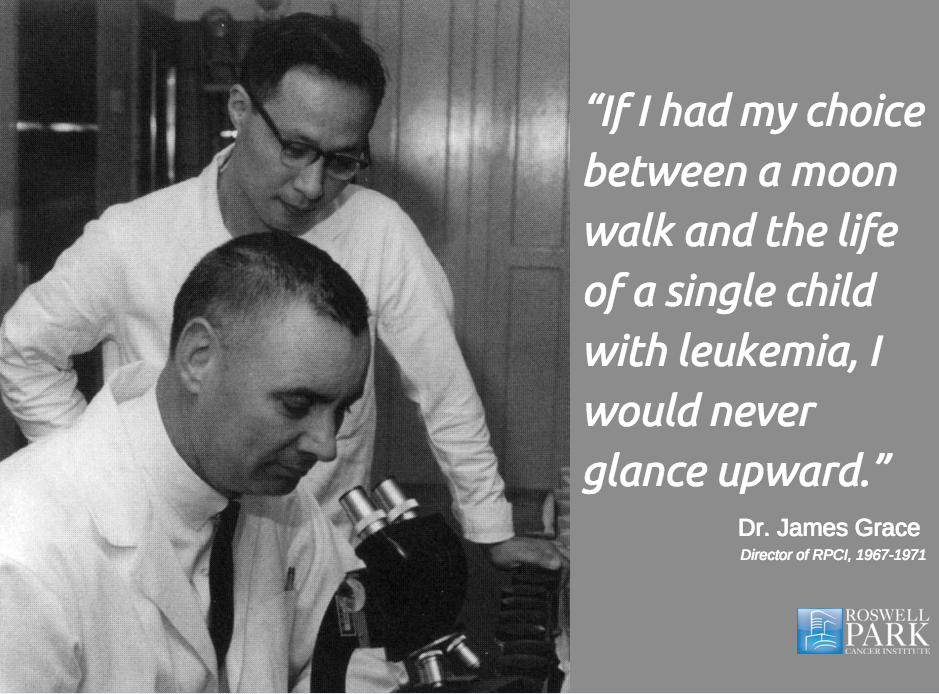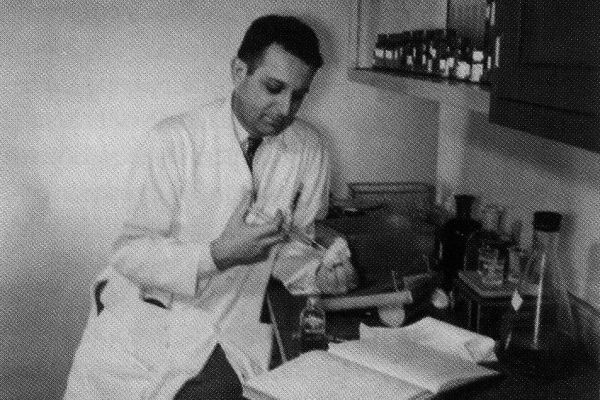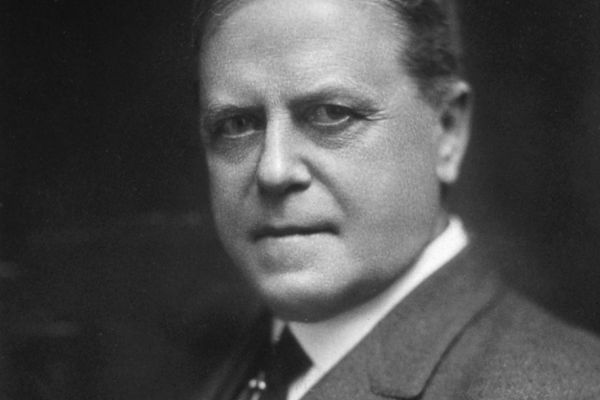In recognition of the 120th anniversary of Roswell Park Comprehensive Cancer Center this year, we're digging into the archives to bring you stories of courage, perseverance, brilliant new ideas and inspiring triumphs. You’ll learn about breakthroughs of the past that became building blocks for the advanced care we deliver today.
The story hidden in a garden plaque
One day in 1955, Dr. James Grace’s two-year-old son, Jimmy, spiked a fever of 105°. It was the first sign that the little boy had acute leukemia — a fast-moving disease that in those days had no hope of a cure.
When his son died only a few months later, Dr. Grace converted his pain to passion. “When Jim died, I was furious for weeks because of our inability to save him,” he wrote to a friend. “I am constantly fired up about this disease. I want it stopped and am prepared to spend my entire life working on it.”
Leaving behind a successful career as a surgeon in Tennessee, he came to Roswell Park in 1957 to focus on leukemia research. Two years later, Time magazine announced that Grace and his research team had provided “the first strong evidence linking viruses with human cancer,” and five years after that, they became the first to grow leukemia cells outside the human body, for use in research.
Due in large part to clinical research conducted jointly by Roswell Park, the National Cancer Institute, and Children’s Hospital of Buffalo, the 1960s saw dramatic improvements in survivorship for patients with acute leukemia. There was great hope — and great excitement — in the field.
“A state of crisis”
But by the end of that decade, Dr. Grace and his colleagues were alarmed and frustrated by drastic cuts in federal funding for cancer research. Just when things were taking off, critical programs had to shut down. Some researchers were forced to abandon their projects and look for more secure jobs elsewhere.
We Set the Model
50 years as an NCI-designated comprehensive cancer center and more than a century leading the way. Learn more about Roswell Park's place in history as we became a model for other cancer centers around the world.
In an address before the American Cancer Society in January 1970, Dr. Grace noted that the federal government had budgeted 434 times more for the military than it had for cancer research that year. “I wonder if this reflects the American citizen’s version of the nation’s true priorities,” he said.
He chronicled recent advances against acute leukemia, Burkitt’s lymphoma, and Hodgkin disease — and the need for funding to keep that progress on track. “Cancer will strike one out of four Americans during their lifetime,” he said. “This number-one disease killer of children costs Americans an estimated $15 billion annually — with suffering and grief that cannot be measured. This nation could provide no greater gift than to be able to tell its citizens destined to get cancer in the future, ‘Don’t worry.’”
Words to recall
Three months after giving that address, Dr. Grace and his wife, Betty, were in a catastrophic auto accident. Mrs. Grace was killed; Dr. Grace died of his injuries more than a year later.
But Dr. Grace left a great legacy, both in his scientific achievements and in the powerful words that helped fuel a groundswell of support for stronger federal funding for cancer research. Four months after his death, the National Cancer Act of 1971 was signed into law.
Honoring Dr. Grace’s work as a champion of cancer patients, Roswell Park gave his name to its Cancer Drug Center. Today a plaque in Kaminski Park bears the words that recall his personal loss and determination:
If I had my choice between a moon walk and the life of a single child with leukemia, I would never glance upward.Dr. James Grace


